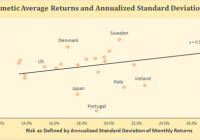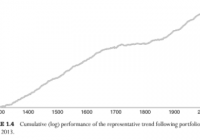Making Sense Of Long-Term Returns
By Michael Batnick, CFA All advisers face the same challenge: How can we best help investors understand what sort of long-term returns they can rationally expect? This is an extremely important topic. It forms the basis of Social Security projections, pension estimates, and determining how much a household needs to save to retire comfortably. What’s often absent from a discussion on stock returns is the many ways in which returns can be measured. There are a lot of questions: What is the appropriate time period? Does one year make more sense than three years? What about a rolling return versus an annual return? When do we start measuring? Should we include the Great Depression or look at post World War II numbers? If you can’t see the importance of this conversation yet, it may be time for a quick reminder. Let’s go over a couple of different ways that we could measure the return of the S&P 500 Index. Remember as you’re reading this that it’s our job to make sure investors understand these nuances. Price Return vs. Total Return If you invested one dollar in the S&P 500 in 1928 (no, this was not possible at the time), it would have been worth ~$109 by the end of August 2015. If you were to measure the total return, however, that $1 jumps from $109 to $3,362! Nominal Return vs. Real Return It’s always important to account for inflation. If we do that, our $1 invested in 1928 becomes $342 in 2015. Compounding at 6.8% after inflation is still an impressive long-term return, even if it is just a tenth of what the total return looks like before inflation is accounted for. Average Return vs. Compound Return The S&P 500 (total return) has averaged nearly 12% a year since the mid-1920s, however, investors’ wealth would have compounded at just under 10%. The reason there is such a large gap between arithmetic and compound returns is because the 12% average returns are not earned in a straight line. There were years like 2008, when the index fell 37%. Once stocks lose 37%, they need to gain 58% to get back to even. As we often find ourselves explaining to the investing public, there are major differences between average annual returns and the returns of any individual year. In the chart below, you’ll notice that the average return of 7.5% (price only) was rarely seen in any one year. Only about 5% of the time did investors generate returns even close to the average. S&P 500 (Price Only) Perhaps a better way to present this data is the distribution of returns. S&P 500 Distribution of Annual Returns (Price Only) This can provide investors with a better idea of what the range of possibilities is. Expecting an average return of X% over a 20-year period is one thing, but being prepared for the outlier years and surviving them is something else entirely. And, of course, these outlier years can happen one after another. How does it change the way that you look at the world if you learned about markets during a year when they performed terribly? It’s a helpful exercise to break returns into different time periods to demonstrate the life-cycle experience an investor might have had. The chart below shows “bull” (green) and “bear” (red) market regimes throughout history. S&P 500 (Log Scale) People born in 1900 would probably count the Great Depression as the formative experience of their investing life cycle. It’s hard to imagine that living and working through it would not leave an indelible impression. Although every period in history is unique, one thing we can say with certainty is that bull and bear markets are permanent features of investing. Take a look at the returns in the table below. In the last 90 years, there were several periods of time when investors’ wealth compounded at very low rates. Pointing to average historical returns is little comfort to investors in the depths of a protracted bear market. Likewise, when markets get overextended, people tend to throw caution to the wind, learning nothing from history. Of course, we have to consider the reliability of the data itself. In an eye-opening paper published in The Journal of Investing, entitled ” The Myth of 1926: How much Do We Know about Long-Term Returns on US Stocks ?” Edward McQuarrie looks at the Center for Research in Security Prices (CRSP) database , which many argue is the gold standard for historical stock returns. He writes: “1) The CRSP time frame, which begins in 1926, excludes more than 50% of the historical record of widespread, large-scale stock trading in the United States, which goes back almost 200 years; and 2) for more than 50% of its time frame, the CRSP dataset excludes the majority of stocks trading in the United States, especially the smaller and more vulnerable enterprises. Putting these two facts together, we may say that CRSP provides comprehensive price series data for less than 20% of the total US stock trading record, aggregating across time period and type of stock.” McQuarrie shares some interesting insights about the way we think about historical stock returns. While not suggesting that the CRSP has failed in its due diligence, he makes the point that there are listing requirements that have undoubtedly omitted stocks from the database. We have seen that different starting periods and different ways of measuring returns can have significant implications for investors. So what if anything can we conclude and suggest to our clients? Here are a few things to remember: Past performance is absolutely not predictive of future results. Data can be manipulated! Sticking with an investment plan during a bad year (or a series of bad years) is what will make them successful. The results of diversification are predictable even if the results of an investment are not. Having a command of these issues and laying them out for our clients beforehand will make for a much more enlightening – and realistic – presentation. Disclaimer: Please note that the content of this site should not be construed as investment advice, nor do the opinions expressed necessarily reflect the views of CFA Institute.

